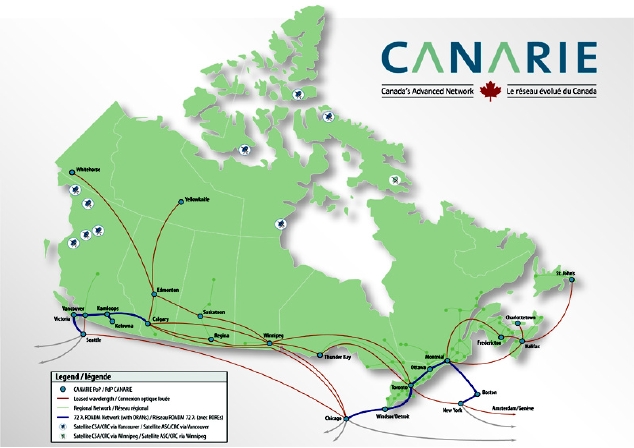framed in either 10 GbE or OC-192 SONET, and will support 40 Gbps wavelengths when
hardware is available.
The first ROADM project, called the "Eastern Canadian ROADM project", established a 2700
km, multi-degree optical mesh network along the busiest corridor of the previous generations of
CANARIE Networks: Chicago Toronto Ottawa Montréal NYC (depicted in blue in Figure
35) with the two new points of presence in Windsor and in Boston. The infrastructure between
Windsor Toronto Ottawa is being shared with the Ontario-based ORAN (i.e. Optical Regional
Advanced Network of Ontario (ORANO)).
The second ROADM project, called the "Western Canadian ROADM project", established a
1500 km, multi-degree optical mesh network from Seattle Victoria Vancouver Kamloops
Calgary, with a spur from Kamloops to Kelowna (depicted in blue in Figure 35).
The
infrastructure is being shared with the British Columbia and Alberta ORANs (i.e. BCNet and
Cybera).
CANARIE-leased Wavelengths:
Between the geographic expanse of the Western and Eastern ROADM project footprints, and
eastward beyond the CANARIE Point of Presence (PoP) in Montréal, 10 Gbps wavelengths are
leased from carriers. The 10 Gbps wavelengths, from carrier DWDM systems, are terminated on
CANARIE optical switches such that the underlying carrier infrastructure is transparent.
Additional 10 Gbps wavelengths can be added on any given route or on a new route, as demand
expands.
Figure 35: CANARIE Network
68

